Also attending was Deputy Prime Minister Nguyen Chi Dung, Deputy Head of the Steering Committee. The meeting was broadcast live to a number of agencies, units and universities in major cities across the country.
Speaking at the opening of the meeting, Prime Minister Pham Minh Chinh emphasized that the fourth industrial revolution is taking place very strongly, especially in the fields of semiconductors, artificial intelligence, cloud computing, the Internet of Things, etc., which are developing very rapidly, contributing to the overall development of each country, including Vietnam.
In the world , the semiconductor industry has developed for a long time, is multi-industry, has a very rich and complex supply chain and production chain, and is multinational in development according to the international division of labor. Each country is moving towards autonomy, including autonomy in designing and manufacturing semiconductor chips, which plays an important role and mission for the common development of the world and of each country today. Every country is moving towards researching and manufacturing semiconductor chips.
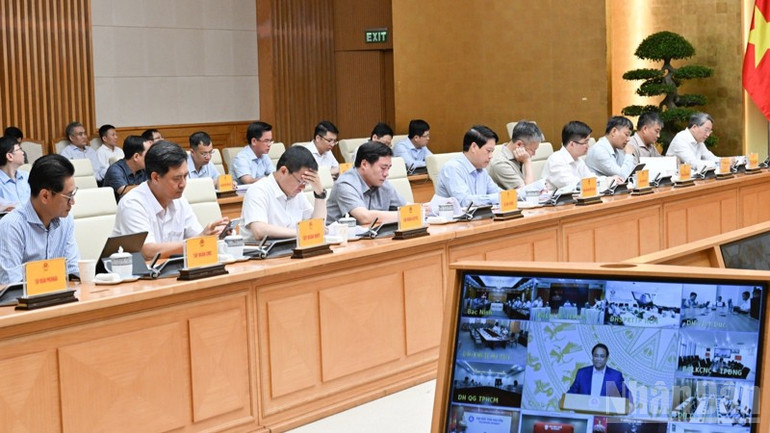
Delegates attending the meeting. (Photo: Tran Hai)
Domestically, we are implementing programs and plans, including Resolution 57-NQ/TW of the Politburo, Resolutions of the National Assembly, Government... to promote science and technology, innovation, digital transformation, including promoting research, production, manufacturing, human resource training, resource allocation, infrastructure development, and building institutions to promote development.
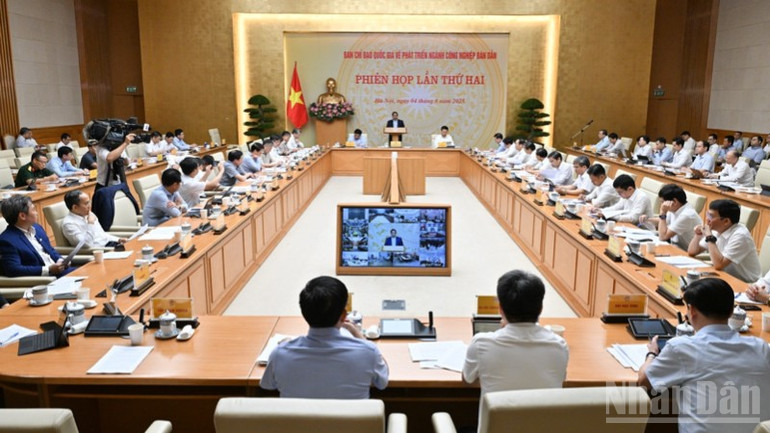
View of the meeting. (Photo: Tran Hai)
The Prime Minister stated that at the previous meeting, we agreed on a number of tasks to implement the tasks and solutions on the Semiconductor Industry Development Strategy to 2030, with a vision to 2050; the Semiconductor Industry Human Resource Development Program to 2030, with a vision to 2050. Implementing this strategy, Vietnam has achieved certain results. However, we must frankly admit that Vietnam still faces many difficulties, obstacles and challenges in developing this extremely important semiconductor industry.
Vietnam is actively building an independent, self-reliant economy, actively and proactively integrating deeply, substantially and effectively into the international community; if we want to protect independence, sovereignty, territorial integrity, and improve the material and spiritual life of the people, there is no other way but to increase labor productivity and effectively exploit domestic resources, including human resources.
AI development and other activities depend on many semiconductor fields to go fast, take shortcuts, get ahead, develop effectively, increase labor productivity, keep up, go along, break through, and surpass.
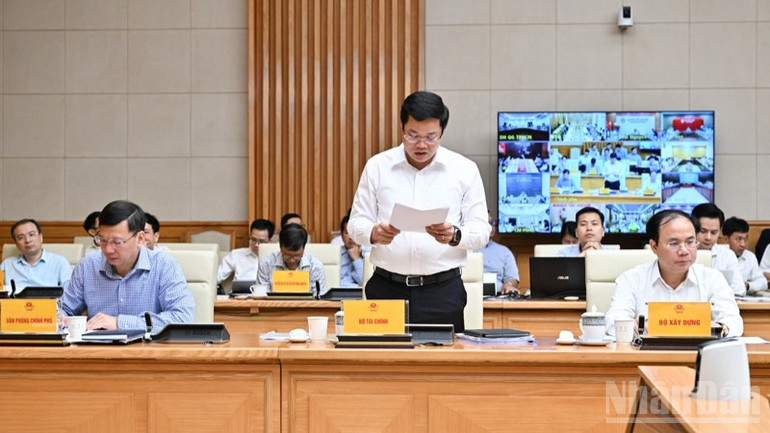
Leaders of the Ministry of Finance report at the meeting. (Photo: Tran Hai)
The Prime Minister asked the delegates to clarify, after a period of implementation, what has been done, what has not been done, why, what lessons have been learned to promote the development of the semiconductor industry. Although Vietnam is behind, can it be ahead, how should it go? This is an issue that must be discussed, researched, directed, and ultimately, human and financial resources must be mobilized, related to infrastructure development to develop the semiconductor industry quickly, in the right direction, and sustainably.
What is the cooperation model between subjects, cooperation between the State, schools, and enterprises? What must be done to take shortcuts, get ahead, surpass, and break through? The Prime Minister hopes that delegates will discuss this issue in depth, review the issues we have implemented in the past and what we have not done, lessons learned, and future directions for what to do because resources and time are limited, and experience is not much, so how should we choose the direction and steps to take shortcuts, get ahead, and move forward?
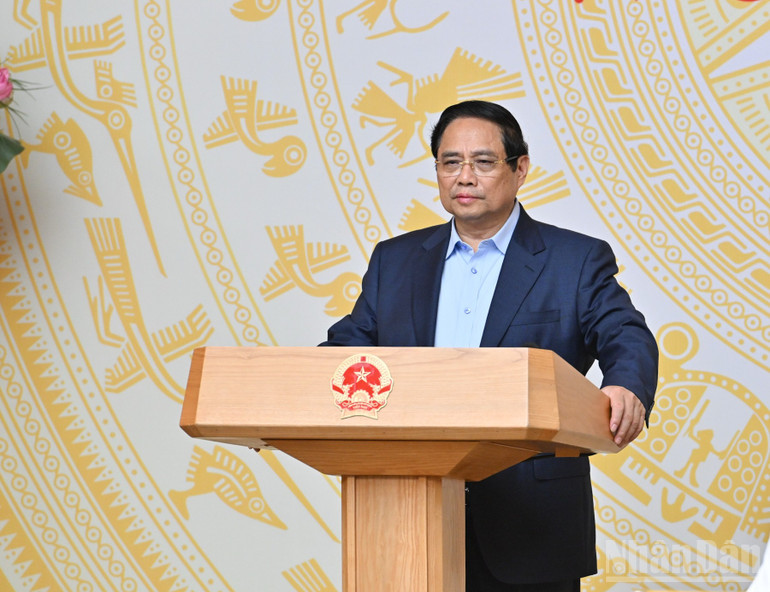
Prime Minister Pham Minh Chinh - Head of the Steering Committee spoke at the meeting. (Photo: Tran Hai)
This is a long-term technical process. One meeting cannot solve all the problems, but it is necessary to define each task, on that basis to lead, direct, and call on relevant subjects to promote Vietnamese human intelligence to design, produce, and participate in global supply chains and production chains. On that basis, draw lessons and propose which bottlenecks need to be removed, which motivations need to be supplemented and promoted.
How to organize, lead, and direct to coordinate closely and effectively, creating the common strength of the whole country, not alone; to make all State institutions, schools, academies, production enterprises... unified, coordinated to create common strength, not fragmented, small-scale, "if you want to go far, you have to go together"; determine a number of tasks to be done from now until the end of the year, and even in the coming years.
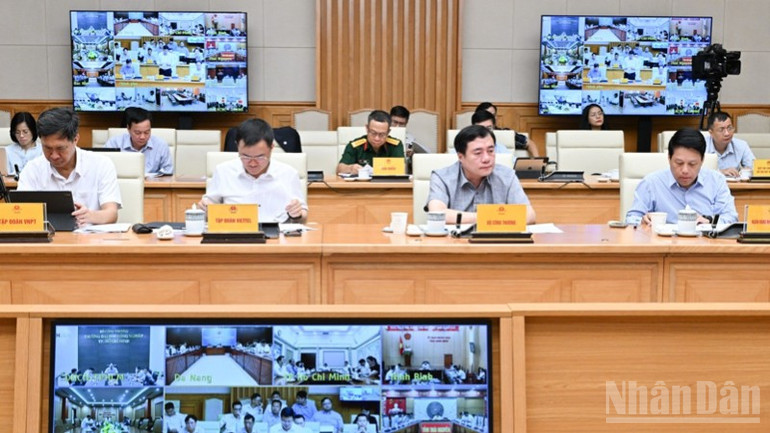
Delegates attending the meeting. (Photo: Tran Hai)
The Prime Minister raised the issue of whether this field should be included in the field of education and training, training right from school...? The Prime Minister suggested that from practice, delegates should promote collective intelligence, contribute ideas, and from there unify a number of tasks in that spirit, with high determination, great effort, drastic action, focus, key points, and complete each task; assign "clear people, clear work, clear responsibilities, clear progress, clear results, clear authority"; this is an issue that is both strategic and immediate, but must "look far and wide, think deeply, and do big things".
The Prime Minister requested to create a breakthrough in the semiconductor industry, thereby raising the question of what people must do, what infrastructure, where is the market, what research facilities must do...? With this year's growth target of 8.3-8.5%, the Vietnamese semiconductor industry must grow, be a leader, and create an industry ecosystem.
* The Ministry of Finance said that Vietnam's semiconductor industry has made great strides, affirming its potential and strong determination to develop strategic technology. Vietnam is gradually participating more deeply in the semiconductor stages that have a foundation in designing, testing, and packaging microchips. Specifically, Vietnam now has more than 50 microchip design enterprises with an estimated engineering force of about 7,000 people; the stages of packaging, testing microchips, and manufacturing semiconductor equipment and materials have about 15 enterprises, with about 6,000 engineers, not including more than 10,000 technicians.
In addition, Vietnam has begun to participate in high value-added processes such as the production of semiconductor equipment, materials and components. There have been semiconductor wafers produced for the first time in Vietnam by Coherent Group, products developed by domestic enterprises in the semiconductor field such as FPT has launched chip products in the medical industry, Viettel has designed chips for 5G devices and CT Group has started construction of a semiconductor chip packaging and testing factory. In particular, Vietnam is aiming for some specific big goals such as having the first chip manufacturing factory chaired by Viettel and attracting advanced packaging from some leading enterprises such as Samsung.
To achieve such achievements in such a short time not only relies on the efforts and initiative from Vietnam but also on impressive steps in cooperation with major countries and economies in the semiconductor field such as the United States, South Korea, Japan, Taiwan (China), France, the Netherlands, the UK, Italy, Austria and large technology corporations and organizations such as Samsung, Apple, Google, Meta, Coherent, Foxconn, Microsoft, Marvell, Qorvo, SEMI, the Semiconductor Association of America (SIA), the Taiwan Sustainable Economic Development Association... to develop the semiconductor industry.
Accordingly, Vietnam is known to the world as a promising destination for the semiconductor industry. A clear proof is that it has become one of about 10 countries and economies in the world selected to host an exhibition in the world's largest Semiconductor Exhibition series (SemiExpo) under the cooperation of the Global Semiconductor Association (SEMI) and the National Innovation Center, Ministry of Finance. SemiExpo 2025 will be held this November and many leading semiconductor business leaders have confirmed their attendance, including the participation of senior leaders of ASML Group, Netherlands.
At the same time, Vietnam was also chosen by GITEX, the world's largest event organizer of the United Arab Emirates (UAE), to host an international exhibition on innovation in 2026. Vietnam's image gradually appeared clearly at SEMI's Semicon exhibition series in Korea, Singapore, Taiwan (China), and Malaysia with the participation of a Vietnamese delegation including diverse state, business, institute, and school components with separate exhibition spaces, introducing the semiconductor ecosystem and "Make-in-Viet Nam" products. This is a strong step to connect the global supply chain, promote high-quality human resources, and attract investment in the semiconductor sector.
More specifically, a symbolic milestone in the journey of deep integration into the global value chain of the Vietnamese semiconductor industry is that the two leading technology corporations in the world, NVIDIA and Qualcomm, have chosen Vietnam as a strategic base for production, research and development of AI and chips. The fact that these two "giants" leading the technology trend have placed their trust and investment in Vietnam has created a strong ripple effect, leading to a supply chain with a huge investment value in Vietnam, and at the same time, a strong shift in Vietnam's position on the global semiconductor and technology map.
Vietnam has urged the US to resume the ITSI Fund's operations, enhancing Vietnam's capacity in all stages of the supply chain, especially manufacturing and design, as well as other cooperation projects under the Vietnam-US Semiconductor Cooperation Memorandum of Understanding (MoC). Japan supports semiconductor human resource training (with joint research projects and training of 250 PhDs in semiconductors by 2030 through the Japan-ASEAN Science, Technology and Innovation Cooperation Project). South Korea supports the project to establish a Semiconductor Research Foundation supported by the Korea Institute of Science and Technology (KIST) in coordination with the Vietnam-Korea Institute of Science and Technology (VKIST). Taiwan (China) supports full scholarships for semiconductors through cooperation between the Intense Scholarship Program and the National Innovation Center. European countries including the Netherlands, France, Italy, the UK, and Austria have coordinated with the National Innovation Center to organize a bilateral semiconductor business forum and send semiconductor business delegations from these countries to Vietnam to connect...
Source: https://nhandan.vn/di-tat-don-dau-phat-trien-but-pha-nganh-cong-nghiep-ban-dan-viet-nam-post898445.html





![[Photo] Chu Noodles - the essence of rice and sunshine](https://vphoto.vietnam.vn/thumb/1200x675/vietnam/resource/IMAGE/2025/11/11/1762846220477_ndo_tl_7-jpg.webp)
![[Photo] Prime Minister Pham Minh Chinh chairs a meeting on housing policy and the real estate market.](https://vphoto.vietnam.vn/thumb/1200x675/vietnam/resource/IMAGE/2025/11/11/1762838719858_dsc-2107-jpg.webp)






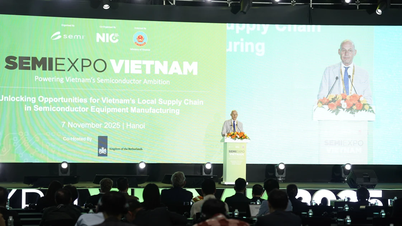
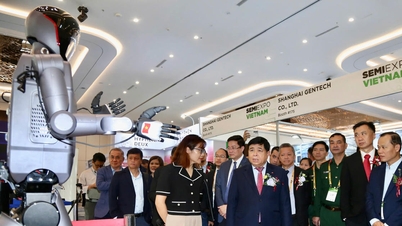



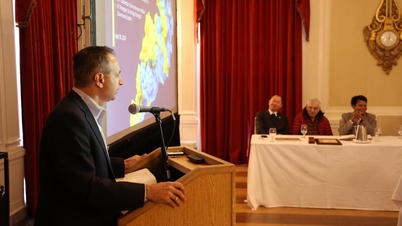


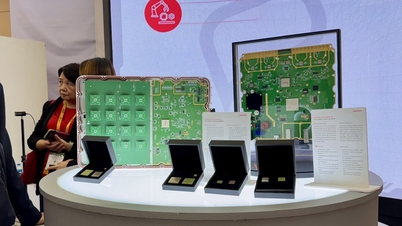



















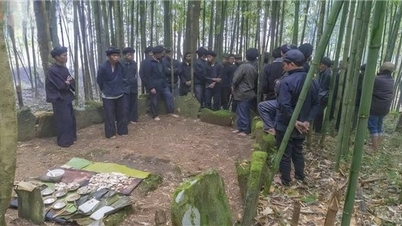






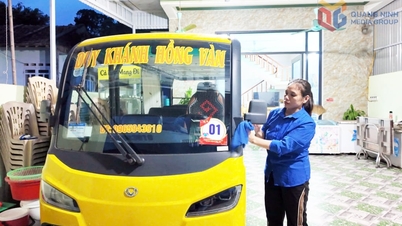



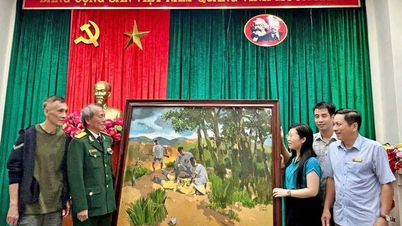

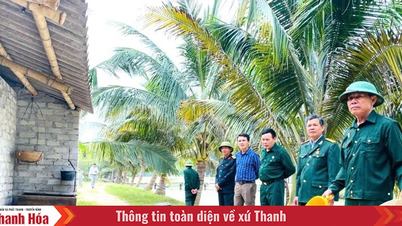










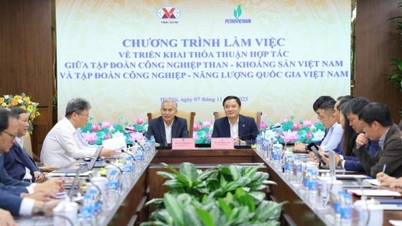

































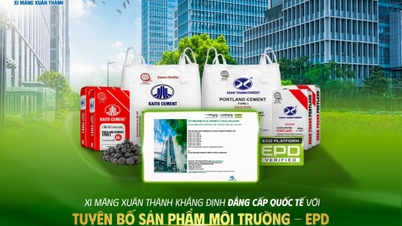
![Dong Nai OCOP transformation: [Article 4] Reaching national standard products](https://vphoto.vietnam.vn/thumb/402x226/vietnam/resource/IMAGE/2025/11/11/1762825820379_4702-cac-san-pham-trai-cay-chung-nhan-ocop-nongnghiep-174649.jpeg)

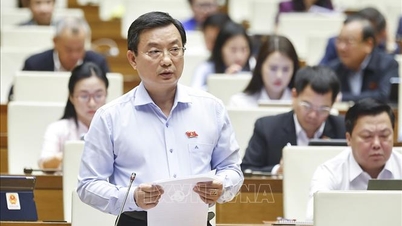

![Dong Nai OCOP transition: [Article 3] Linking tourism with OCOP product consumption](https://vphoto.vietnam.vn/thumb/402x226/vietnam/resource/IMAGE/2025/11/10/1762739199309_1324-2740-7_n-162543_981.jpeg)






Comment (0)